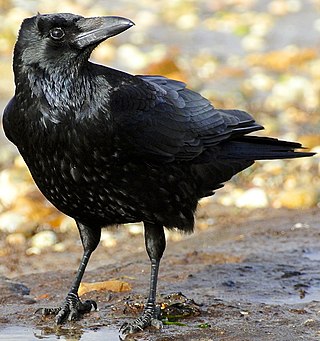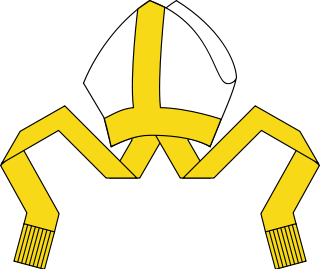The name Cirilo Flores can refer to:
- Cirilo B. Flores, a 20th-21st Century American clergyman of the Catholic Church
- Cirilo Flores Estrada , an important Guatemalan politician from the 18th and 19th Centuries
The name Cirilo Flores can refer to:

Flores Island is an island of the Western Group of the Azores.

Alaminos, officially the Municipality of Alaminos, is a 3rd class municipality in the province of Laguna, Philippines. According to the 2020 census, it has a population of 51,619 people.

A crow is a bird of the genus Corvus, or more broadly a synonym for all of Corvus. The word "crow" is used as part of the common name of many species. The related term "raven" is not linked scientifically to any certain trait, but is rather a general grouping for larger-sized species of Corvus.
The 21st Don Carlos Palanca Memorial Awards for Literature was held to commemorate the memory of Don Carlos Palanca Sr. through an endeavor that would promote education and culture in the country.

The Diocese of San Diego is a Latin Church ecclesiastical territory or diocese of the Catholic Church in Southern California, United States. Its ecclesiastical territory includes all of San Diego and Imperial Counties.
The 25th Don Carlos Palanca Memorial Awards for Literature was held to commemorate the memory of Don Carlos Palanca Sr. through an endeavor that would promote education and culture in the country.

Rio das Flores is a municipality located in the Brazilian state of Rio de Janeiro. Its population was 9,344 (2020) and its area is 478 km2.

St. John's Seminary is a Private Catholic graduate seminary in Camarillo, California.
Flores is a Spanish, Italian and Portuguese surname.

Robert Henry Brom was an American prelate of the Roman Catholic Church. He served as bishop of the Diocese of Duluth in Minnesota, from 1983 to 1989, and as bishop of the Diocese of San Diego in Southern California from 1990 to 2013.

Tultepec is a city and municipality located in State of Mexico, Mexico. It lies directly north of Mexico City in the northeastern part of the State of Mexico, making it part of the Greater Mexico City urban area. The name comes from Náhuatl meaning 'hill of the 'tule'. The census of 2005 reported a population of 57,586 for the city and 110,145 for the municipality as a whole.
Magon or Magón may refer to:
Saucedo is a Spanish surname that became popular in the 16th century. It means "Of or relating to the Willow Tree". The first people with that name were Spanish settlers who came to America from an area in Spain known as the "Valle de Salcedo". From then on, the name variated from Salcedo to other names such as Salcido. The Basque version is Saratsu or Sarasua

Cirilo Villaverde de la Paz was a Cuban poet, novelist, journalist and freedom fighter. He is best known for Cecilia Valdés, a novel about classes and races in colonial Cuba.

Cirilo B. Flores was an American prelate of the Roman Catholic Church who served as bishop of the Diocese of San Diego in California from 2013 until his death in 2014. He previously served as coadjutor bishop of the same diocese from 2012 until 2013 and as an auxiliary bishop of the Diocese of Orange in California from 2009 until 2012.

Quiza also known as Vuiza (Βούϊζα), which Pliny the Elder called Quiza Xenitana, was a Roman–Berber colonia, located in the former province of Mauretania Caesariensis. The town is identified with ruins at Sidi Bellater, Algiers.
Siempre te amaré is a Mexican telenovela produced by Juan Osorio for Televisa that premiered on Canal de Las Estrellas on January 24, 2000 and ended on July 28, 2000. It was adapted from the 1975 telenovela Lo imperdonable by Consuelo Garrido and Georgina Tinoco.
Los años felices is a Mexican telenovela produced by Valentín Pimstein and directed by Enrique Lizalde and Jorge Sánchez-Fogarty for Televisa in 1984. Is the prequel of the 1985 telenovela Los años pasan.

Millka is an archaeological site in Peru. It is located in the Ayacucho Region, Víctor Fajardo Province, Sarhua District, northeast of Sarhua. The site of the Chanka period lies on top of a mountain at 3,500 m (11,483 ft).

Isla de Flores is an island located in Lake Petén Itzá, belongs to the Petén Department, Guatemala. The city of Flores is located on this island, which is part of the head of this department, next to the town of Santa Elena de la Cruz. It was formerly known by the natives as "Noj Petén" which means "Big Island". The Spanish conquerors destroyed Noj Petén in the c. 16th century, leaving it abandoned until the c. 18th century.